Back in June, I published the first part of my Young Ones Music Guide, detailing every single piece of music heard in Series 1 of The Young Ones. Some of you may be wondering why the second part is taking so long to appear.
By way of explanation, I have a tale for you today. It is a thrilling tale, tracing a piece of comedy history, full of twists and turns, with a stunning climax. It also features Gregorian chanting and incorrect paperwork, but don’t let that put you off.
Here is how complicated tracing the specific music used in television programmes can be.
* * *
So let’s take a look at one particular scene in “Time”, where Rick decides to turn on the radio and dance in order to disguise his manic sexual thrusting. Unfortunately for him, the music which emanates from the radio is the least danceable piece of music in the entire world.
Cor, Rik Mayall was funny, wasn’t he?
Now, how do we identify that music? Luckily, we have a starting point for this; in my possession is some of the paperwork for The Young Ones, including a list of ostensibly all music used in each episode. This is very rarely complete, but things looked promising when it came to identifying this particular track:
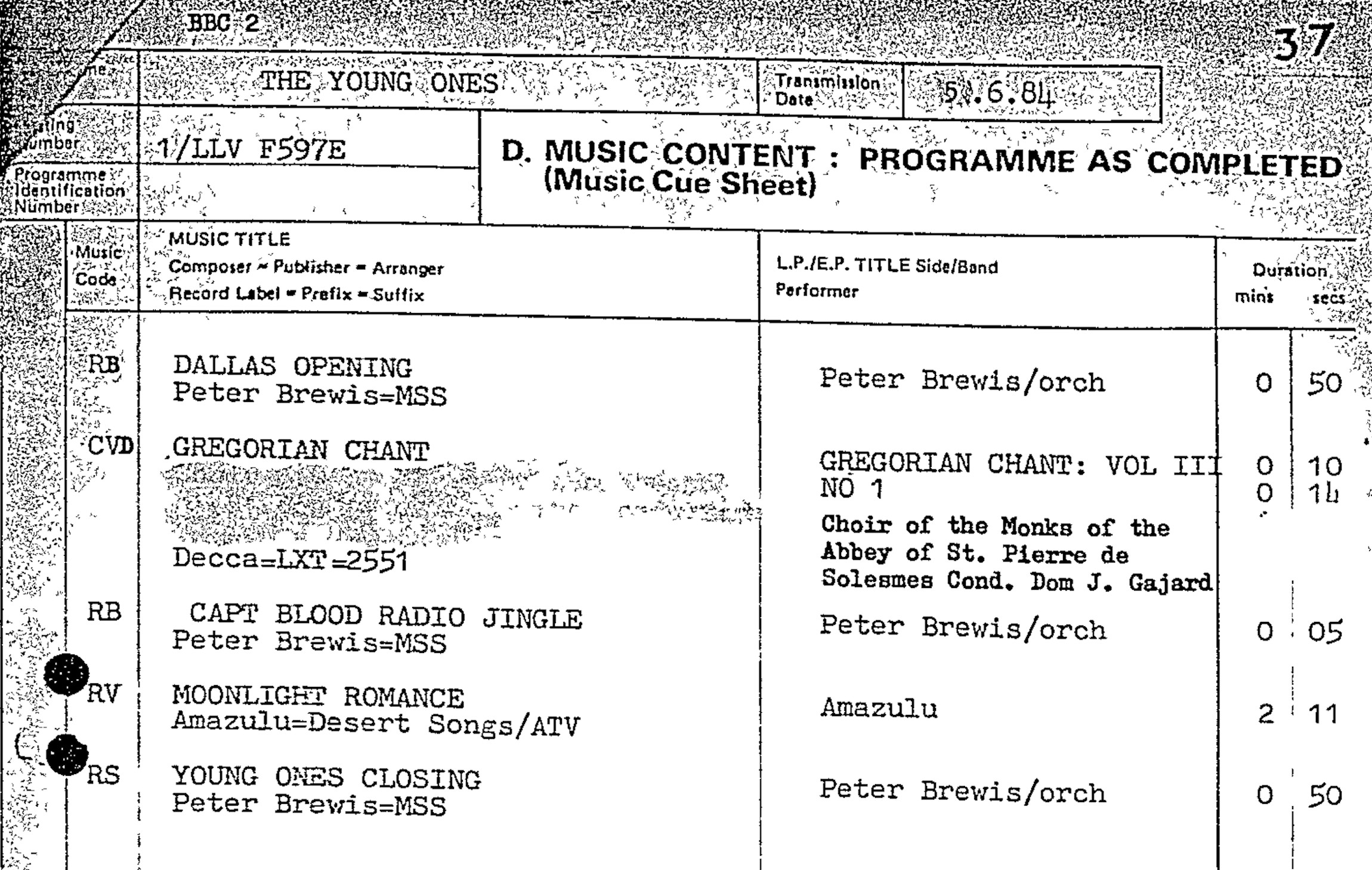
Not only do we have an album name – Gregorian Chant: Vol III No 1 – but we have the name of the choir, and the name of the conductor. And best of all, we have a Decca catalogue number: LXT 2551. This one was going to be piss-easy to track down, surely.
So, the first thing to do was to look up that catalogue number. LXT 2551, ho hum, here we go…
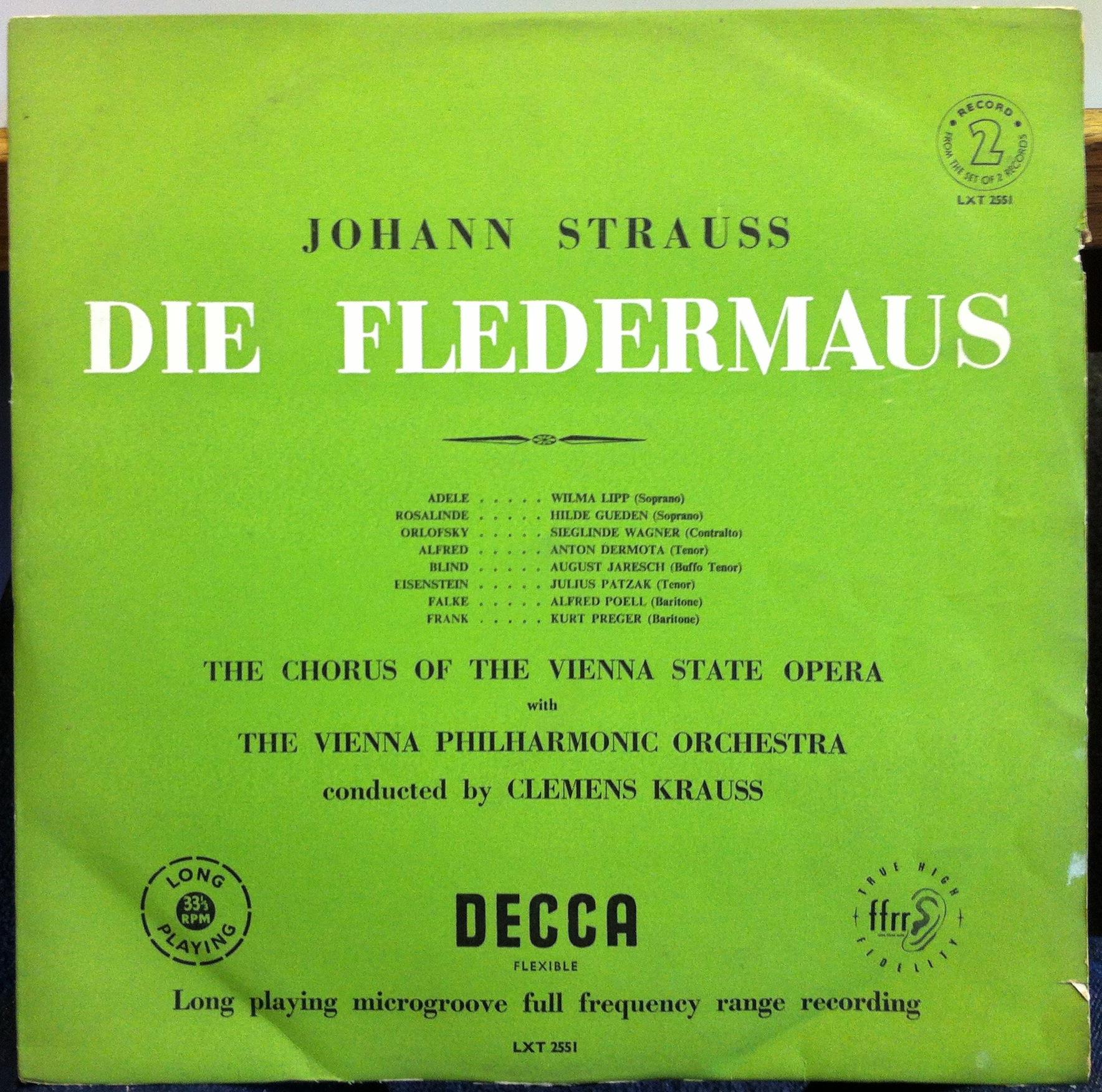
Hmmm. That does not appear to be an album of Gregorian chanting.
No matter. I had the name of the album, and the name of the artistes. This really shouldn’t be difficult to find. Sure, searching for “Choir of the Monks of the Abbey of St. Pierre de Solesmes” on Discogs was going to be one of the more unusual search requests I’d ever made, but the release should easily reveal itself. All kinds of ludicrously rare stuff is on there, after all.
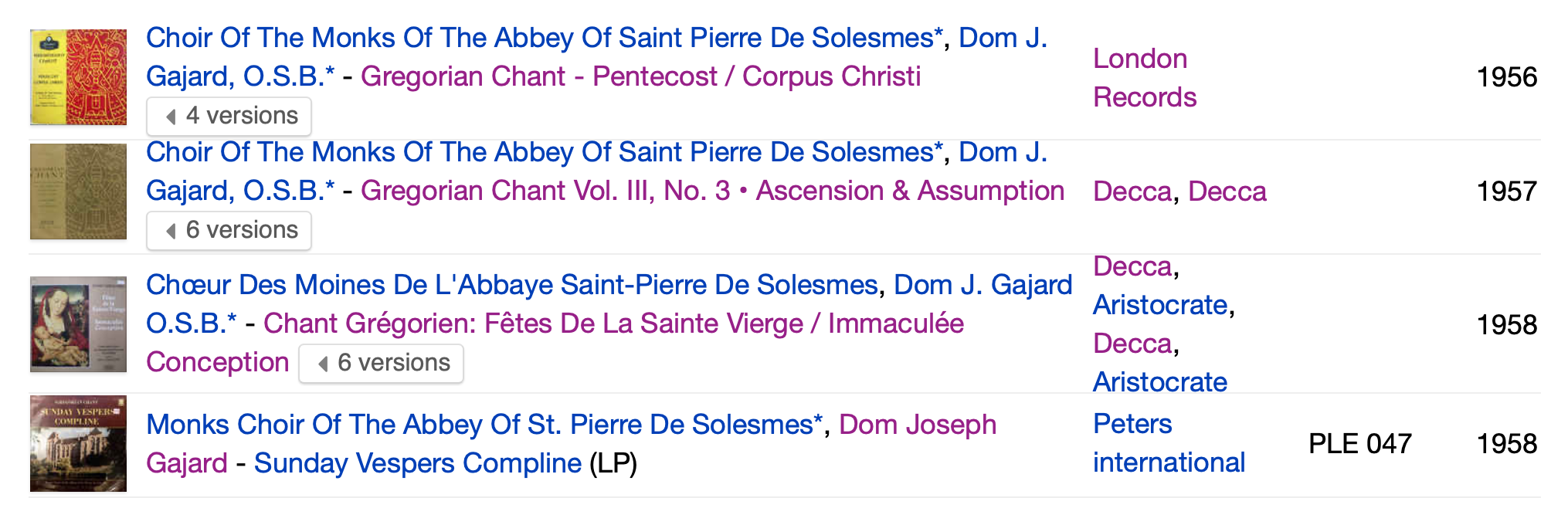
And at this point, I started getting annoyed. Because seemingly, every single bloody release the Solesmes Abbey monks ever recorded is listed on Discogs, aside from the one I wanted. I mean, literally, every single release. If I wanted Volume III No 3, for instance, I’d be in business.
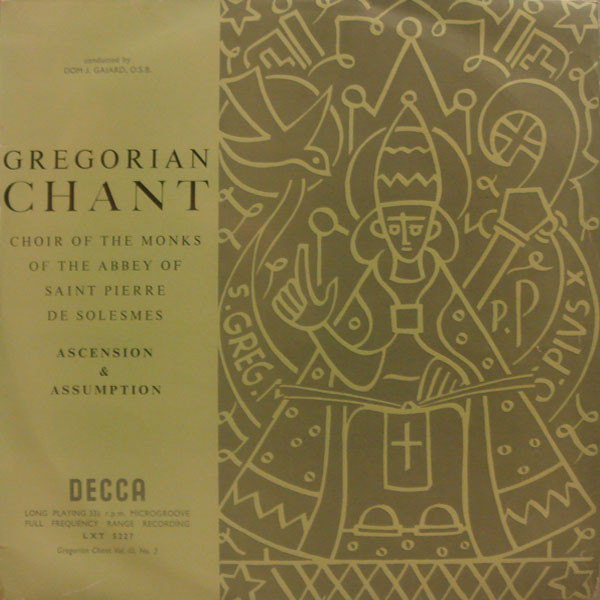
But I didn’t, so I wasn’t.
So, I did some more rummaging. I get one closer; here’s Volume III No 2, which also goes by the subheading of Easter:
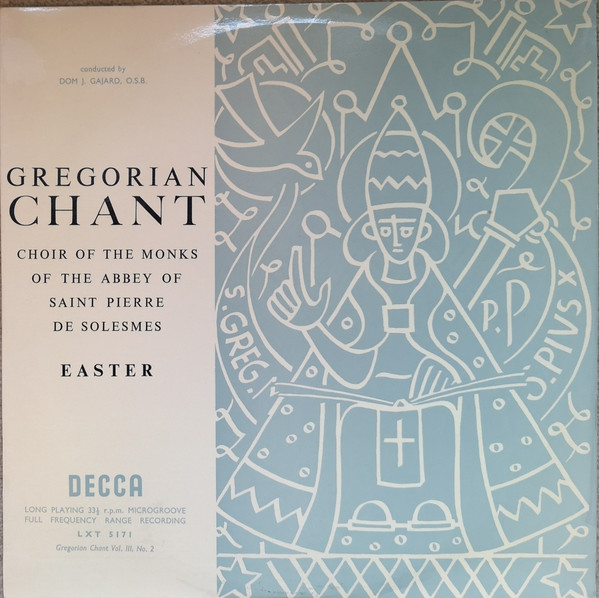
And then, I had a brilliant idea. Volume III No 2 has a catalogue number of LXT 5171. Hey, I wonder what LXT 5170 is…

OK, whatever, worth a try.
Now I started getting desperate. The catalogue number for Volume III No 1 is listed in the paperwork as LXT 2551. It was unlikely to be entirely wrong; two figures were probably transposed. So I started swapping round numbers. I wonder what LXT 5251 is?
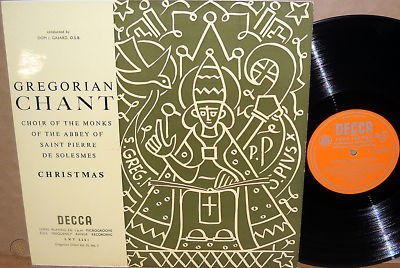
Not for the first time, low-quality images online are the bane of my life. Is that “Vol III No 1” listed on the front? I couldn’t tell. Never mind, perhaps Discogs has a high quality version…

Ah, bollocks.
I have to be honest: at this point, my spidey sense failed me. The fact that transposing those numbers led to a Gregorian chants release should have been enough of a coincidence to make me investigate further. But after searching for ages, I just couldn’t find a link between this release, and “Volume III No 1”. I would have expected the Discogs page to list it as an alternative title, just as the Easter release did.
Moroever, I was also perturbed by the catalogue number itself. If Volume III No 2 had the number LXT 5171, why the hell would No 1 have LXT 5251? Surely No 1 would have a catalogue number earlier than No 2?
So I threw the situation out to Twitter, and went to bed. And low and behold, @Bendroid2000 came up with the answer. Finally, on a ludicrously obscure website, proof that “Vol III No 1” and “Christmas” were one and the same release:

This is unmistakably the release I was looking for. As for why the catalogue number for No 1 is higher than No 2, who knows? Maybe the Christmas release was commissioned earlier, and released later. No matter: finally, I was getting closer.
And at this point, I finally had a bit of luck, something which has been conspicuously absent from this story so far. Some searching for Christmas Gregorian chant albums lead me to this release, issued July 2019. Surely, it couldn’t be…
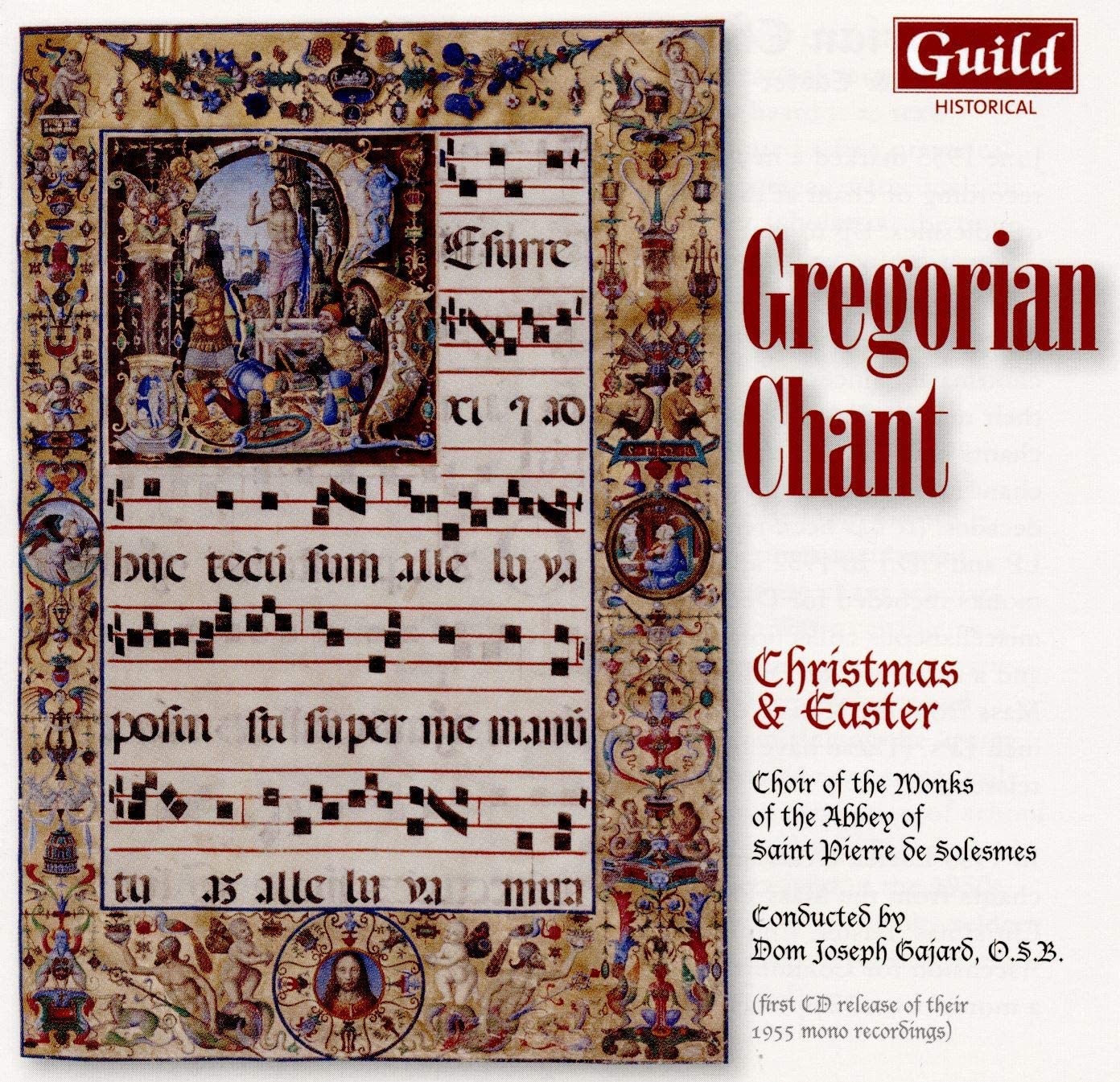
“Choir of the Monks of the Abbey of Saint Pierre de Solesmes”? Check.
“Conducted by Dom Joseph Gajard, O.S.B.”? Check.
“Christmas”? Check.
“First CD release of of their 1955 mono recordings”? Bloody check.
For all the world, this looked like a brand new CD release of Vol III No 1 (Christmas) and No 2 (Easter) combined. So I threw caution to the winds, and put it on order. And the next day:

A CD of Gregorian chant music was awaiting me for collection. This isn’t exactly how I saw my life turning out.
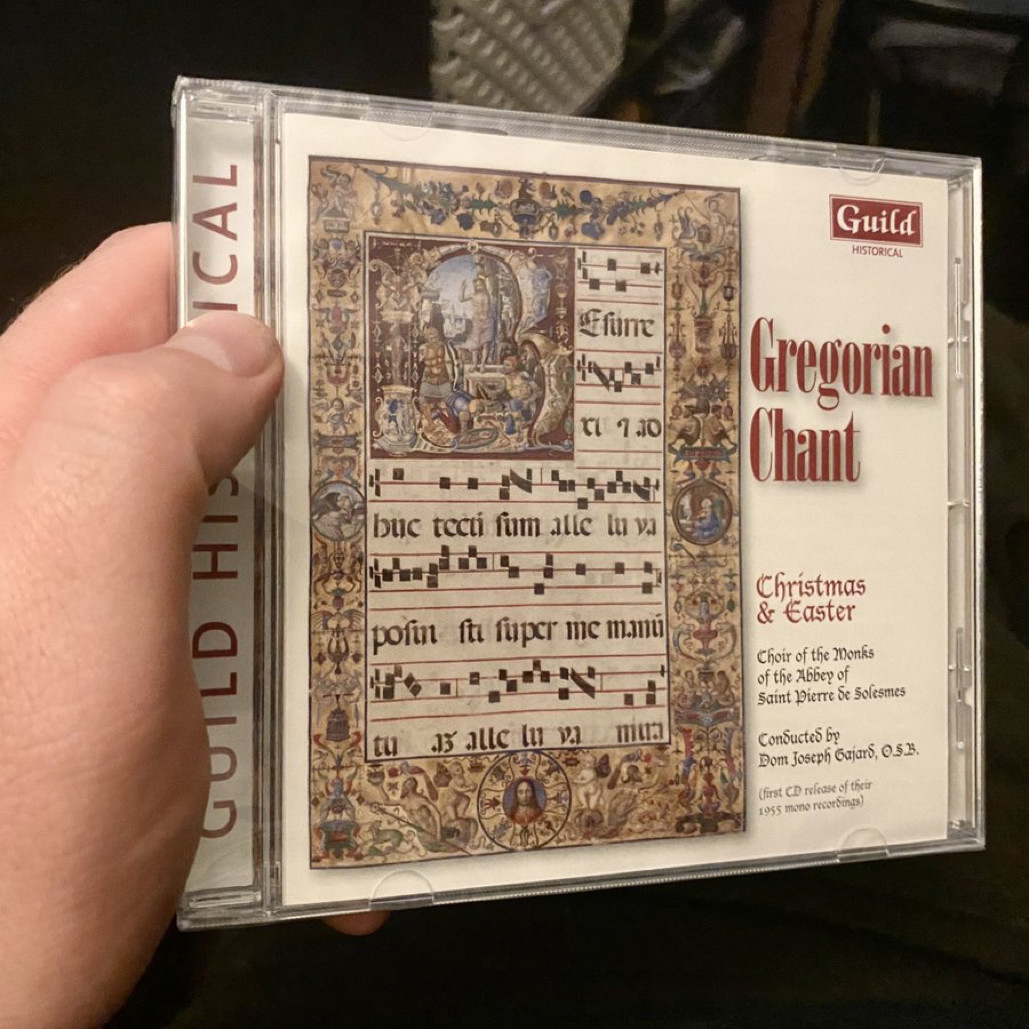
Unfortunately, I now had another problem. A problem that I’d put off thinking about until I had to. You see, one other thing was conspicuous by its absence on the Young Ones paperwork. It listed the title, the artist, and the conductor… but not the track. And there were 14 tracks on this CD, with a total of over 40 minutes of music.
I was going to have to listen to the entire thing from the beginning, until I recognised the snatch of music used in the episode.

There isn’t really a trick here. Shazam and the like aren’t going to help with something like this. You just have to listen to the relevant part of the episode over and over again, until it gets stuck in your head. Then you listen to the CD, and see if anything stands out. This might be easier with certain kinds of music, but my brain has precisely zero sympathy with or knowledge of Gregorian chanting.
So I popped the CD in, pressed play, and sat back and listened, running the refrain – if you can call it that – over and over again in my head. Sometimes, I’d stop, and listen to the episode again to remind myself what I was searching for, and then continue. I have to admit, my eyes somewhat glazed over.
Until suddenly… was that it? I played it back again. There it was. Track 7, “Introit Puer natus est”. A massively famous piece of work, in fact. Not that I had any clue.
Which means that when Rick turns on the radio, he turns on precisely three seconds into this exact track:
(The full thing runs for 3:20, but I’ve only included the first 40 seconds here. God cares about copyright too, you know.)
But the story isn’t quite over. In fact, Gregorian chanting turns up twice more in “Time”. Firstly, when Rick turns the radio back on:
And again, when we actually cut to Captain Blood himself:
Careful listening to these two instances prove that they also use exactly the same track – just 10 seconds into it, in both instances.1 Which makes sense. To the untrained ear, this music all sounds fairly similar – why would the production bother with three different tracks, when using the same one each time would do?
* * *
So, hopefully that gives you an idea of just what a time-consuming nightmare researching these kinds of things can be. Which leaves me with just one final admission. I may have no interest in Gregorian chant music, and I may not find it especially pleasing to the ear.
But hey, the liner notes to the CD release I’d bought were just sitting there. Might as well give them a read.
“June 1955 marked a new era in the recording of chant at the abbey of Solesmes. Up to that time the monks had recorded only three compilations of chant under Dom Joseph Gajard (1885-1972), their choirmaster since 1914. In 1930 their miscellaneous collection of chants on HMV set the standard of chant interpretation for the next two decades. (It has been reissued on LP and CD.) In 1952 and 1953 the monks recorded for Decca another miscellaneous collection on five LPs and a collection of Ordinaries of the Mass from the Kyraile on four ten-inch LPs. (These have been partially reissued on CD.) […]
Why then, do we need the present disc, so long unavailable? It is a matter of preserving a stage in understanding Dom Gajard’s interpretation of chant. The earliest research at Solesmes was carried out by Dom Joseph Pothier (1835-1923), who…”
Oooh, that’s interesting. I wonder if… oh shit, I’ve been sucked in. From Young Ones production minutiae, to Gregorian chant production minutiae. My brain is just obsessed with the history of this stuff, whatever the topic.
Sigh. Never mind. Now, why was Captain Blood Radio playing Christmas music in an episode specifically set on June the 12th, anyway?
The section with Captain Blood himself was extremely difficult to work out, as there’s just the merest snatch of the track before Robbie Coltrane starts bellowing – but there is just enough of it to figure things out. ↩

3 comments
Ade jacobs on 12 August 2020 @ 3pm
What a fascinating article, always love it when someone goes that extra mile to satisfy a curiosity/obsession.
That is another jigsaw sized piece completed in your quest regarding Young Ones Music.
Nice work sir.
Joe Scaramanga on 12 August 2020 @ 5pm
Love it.
You really should be getting a mention in the New Year’s Honours List for services to obscure TV minutiae.
Nic Bowden on 13 August 2020 @ 10am
Shame they didn’t pick an Easter track instead. What an amazingly subtle joke that would have been!
And double shame it ended up being broadcast on June 5th instead of 12th…
Comments on this post are now closed.